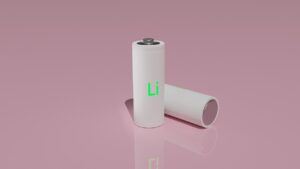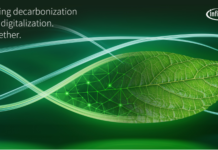
As we move further into the future, mankind will inevitably need to address the impact that we have had on the environment. Mass deforestation, climate change, global warming and carbon emissions are just some of the consequences of mankind’s march into the future.
Mankind’s dependency on fossil fuels has long been one of our greatest weaknesses and the key driver behind mankind’s development. Emissions from fossil fuel-powered vehicles include carbon and sulfur dioxides – pollutants that contribute to global warming and acid rain respectively.
Fortunately, it’s not all bad news.
Recognizing the impact that humanity has had on mother earth, individuals, governments, and businesses have come together to reduce our global footprint.
Lithium; An Element of The Future
Developing electric vehicles and turning to alternative energy sources is one of the ways in which we can develop sustainably. The push for electric vehicles to become mainstream has been gradually growing as we’ve seen in recent years.
Governments in Europe particularly have been making a push for car manufacturers to go electric by introducing stricter emission requirements and levying heavy penalties on companies that fail to comply.
In line with new EU regulations, reports estimate that more than 500,000 electric cars were sold in 2020 in Europe alone. This trend is set to continue into 2021 with Tesla’s explosion in popularity and a democratic, liberal president in the White House.
The popularity of alternative energy and electric vehicles means that there will be a marked demand for Lithium. Lithium is an alkali metal that was discovered in 1817 by Johan August Arfvedson. It reacts vigorously with water and has a soapy texture when touched.
This remarkable metal has a variety of uses from powering the Lithium-ion batteries in cellphones, laptops, and electric vehicles to being used in the treatment of mental disorders like depression.
Electric vehicles can be classified as either being fully electric or hybrid. Fully electric vehicles are powered by an electric motor with a battery. It can be recharged at charging stations or power outlets.
Hybrid vehicles are a combination of petrol and electric vehicle – with both a petrol/diesel engine and electric motor with battery.
Both of these vehicles make use of a rechargeable Lithium-ion battery to power the onboard electric motor. The only difference being that a hybrid vehicle’s electric motor is charged by the petrol/diesel engine.
Lithium also plays a vital role in the advancement of sustainable energies as Lithium-ion batteries are used to store energy generated. Alternative energy sources such as wind and solar power are reliant on the availability of wind and sunshine to generate energy.
This is where the role of batteries come into play. Energy generated from these installations can be captured and stored for later use – thus making alternative energy sources a much more viable choice.
Lithium Mining and Its Effects on The World
Lithium is extracted from minerals that are found in the earth with Australia and Chile having the largest lithium deposits in the world. The alkaline metal is so ubiquitous that 50% of Lithium mine in the world is used for the manufacture of Lithium-ion batteries.
Lithium mining operations have a drastic effect on the environment. Extracting Lithium from the earth involves pumping large quantities of water into underground deposits to bring rich mineral deposits to the surface.
Then, the brine is left to evaporate in huge pools that contain a variety of minerals. This process has been known to have a devastating effect on the environment.
The huge quantities of water used during the mining process has resulted in rivers and lakes being drained whilst effluent from evaporation pools has been known to leak into local water tables and cause irreversible soil damage.
Mankind’s reliance on Lithium for our industries will prove to be detrimental in the long-run and override any benefits gained from making the switch to alternative energy or electric vehicles.
Graphene: An Alternative Energy
Thus, with Lithium having such a detrimental effect on the environment, would it be possible to make the switch to a more environmentally friendly element. One which would prove to be more sustainable in the long run?
Enter Graphene. Graphene is a carbon allotrope i.e. a layer of carbon atoms arranged in a specific pattern. Other allotropes of carbon include diamond and graphite – elements with a variety of real-world uses.
What makes Graphene so interesting is its potential as a suitable replacement for Lithium-ion batteries. As is, we’ve seen how Graphene-Lithium hybrid batteries are able to store more energy and be charged faster whilst still being lighter than conventional Lithium batteries.
While this is still a relatively new technology, the potential for Graphene batteries is limitless and we may even see a future with Graphene components in all of our devices.
Besides better batteries, studies have shown that Graphene may even be able to deliver faster internet speeds thanks to its large surface area. This would be great news for crypto miners too.
If you look at how many bitcoins are there in the world right now, just imagine how that number could triple if everyone mining had quicker internet speed!
The mass production of Graphene is still a long way off with current methods proving to be expensive, difficult, and highly polluting.
However, the future of Graphene is clear. With so much potential, it is highly unlikely that this technology will be left by the wayside.



















